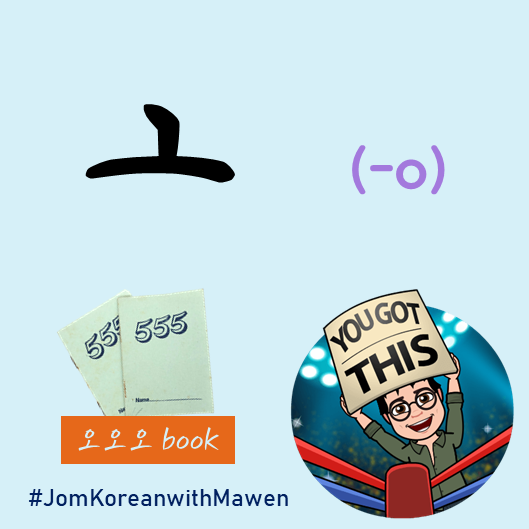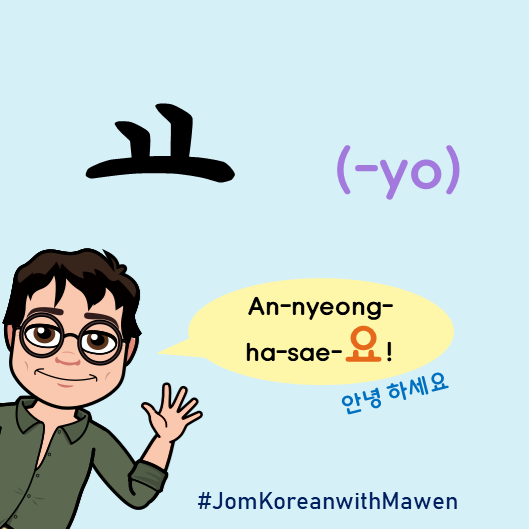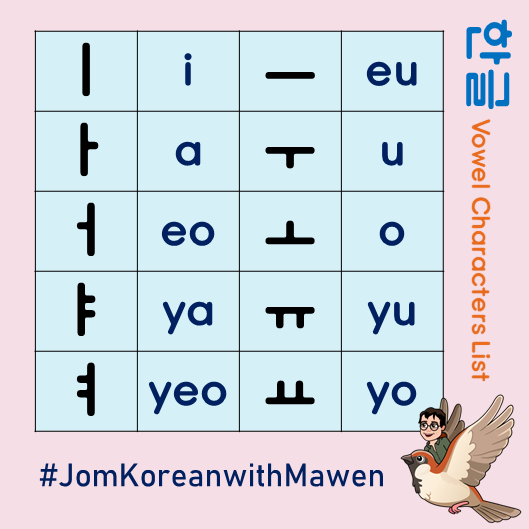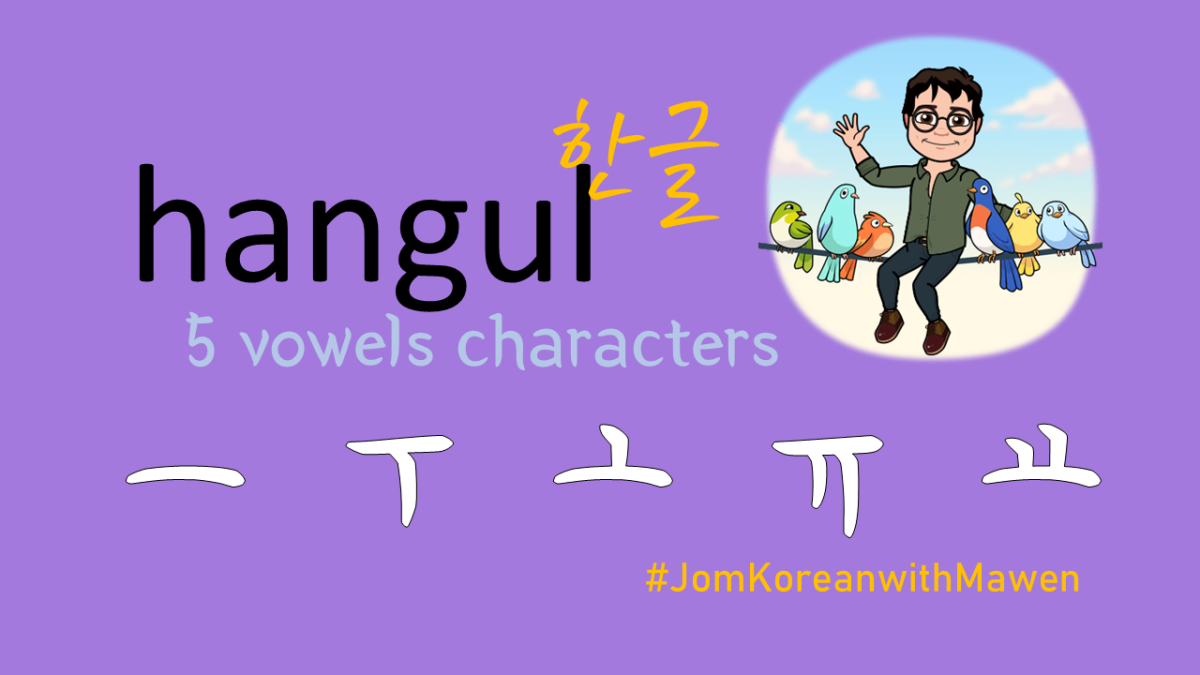Annyeonghasaeyo, everyone. How was the first lesson? Have you take some time to remember -ㅣ, -ㅓ, -ㅏ, -ㅑ, -ㅕ? Feel free to go back to our first lesson and practice writing with the worksheet provided here: Go back to the first lesson!
We will continue learning the next 5 vowel characters in Hangul. Last week, the 5 vowels are written from left to right in the syllable form. For example:
ㅇ(placeholder) + ㅏ(-a) = 아 (a)
ㅇ(placeholder) + ㅑ(-ya) = 야 (ya)
The next 5 vowel characters we learnt today, however, are written from top to bottom. These are the 2 possibilities of the character arrangement in forming a syllable. Let me introduce the 5 vowels for today, before we get deeper with the writing arrangement. The vowels for today have similar patterns and shapes with the first 5 we learnt.
The first one is similar like ‘-i’ (ㅣ), but it is rotated horizontally, forming ‘-eu’ (ㅡ). This is pronounced as ‘earl’ without the ‘-rlllll’ sound. There are less vocabulary with the word 으, but it is commonly used as an expression of annoyed, similar like ‘Ugh!’.

Have you notice how ‘eu’ is written as a syllable itself? It is written from top to bottom, instead of left to right. Similarly, we should add the placeholder (ㅇ) first (top) before the vowel (bottom).
ㅇ (Placeholder) + ㅡ (-eu) = 으 (eu)
Easily, add a vertical stroke below the ‘ㅡ’ to form the second vowel ‘-u’ (ㅜ). This is very similar like a T shape. ‘U’ (ㅜ) is pronounced like ‘woo’. The word ‘우’ has several meanings in Korean, it can mean ‘right (direction)’ or ‘cow’. However, these meanings are rarely used, or only applied in phrases. You should be careful, as a word of a similar sound can have several meanings. Let’s have an easier phrase as an example, the word ‘우’ can be found in the word ‘we/us’ in Korean, ‘u-ri’ (우리).

Do you remember how to transform ‘-ㅏ’ to ‘-ㅓ’? Rotation is the hint! Yes, this time we will rotate ‘ㅜ’ 180 degrees to form the third of today, ‘-o’ (ㅗ). You can relate this as an inverted T. ‘-ㅗ’ is pronounced as ‘aw’, which can get confusing with ‘eo’ (-ㅓ). There is some tips on how you can differentiate them. Honestly, you can get very confused by hearing them.
-ㅗ (-o): pronounce with rounded mouth, sounds like ‘aw’.
-ㅓ (-eo): pronounce with opened mouth, sounds like ‘oh’.
‘오’ (o) means number, five in Korean. Let’s have a bit of warm up before we go to Korean numbers later!

Let’s have a quiz again! When we add another dash for ‘-a’ (-ㅏ), what will happen to ‘-ㅑ’? Yes, we have a ‘y’ sound to the ‘-a’, forming ‘ya’. This rule is similar to ‘u’ (ㅜ) as well. As we add another stroke to the ‘ㅜ’, it gives the ‘y’ sound, forming ‘yu’ (ㅠ). This sounds like You and I, ‘you’. As we relate ‘-u’ and ‘-yu’, it can form a vocabulary, ‘우유’ (u-yu) which means milk. Don’t you like Banana 우유?

Have you guess the last one? If we add another stroke to ‘-o’ (-ㅗ), it will become ‘yo’ (-ㅛ). This is pronounce like ‘yo-yo’, yo! We are actually quite familiar with this ‘yo’ in Korean conversation. The formal language often ends with ‘yo’ (요), such as the often said ‘an-nyeong-ha-sae-요’.

🎉🎉🎉 Yes! You have completed learning all the 10 vowel characters in Hangul! This worth a celebration. We are just 14 characters left from mastering all the Hangul characters. Let us recap all the vowels characters we have learnt so far.

Now, it takes time for you to practice writing them nicely, while remember them in your head. Spend your extra time doing some exercise, practice writing them in the worksheet below, and test yourself if you can recognize without referring to the notes. You can learn faster later as we learn the consonants, being able to read more Korean words in a sentence, only if you can get these vowels nailed in your head! Enjoy your #stayathome moment with #JomKoreanwithMawen.
Learn Korean with me through #JomKoreanwithMawen video series, while enhance your understanding through lesson posts in MyDaehan to give you the best learning experience!
In next post, we will proceed with consonants, step-by-step in mastering all the 25 Hangul characters with you!
Tune in every Saturday for new lesson posts and follow our Instagram @mydaehan2020 for #JomKoreanwithMawen video lesson series!
Author

Melvin Tan
Content Manager (Language)
Online Supporter of Korean Embassy in Malaysia
Bio-science student in Universiti Teknologi Malaysia
Korean Enthusiasts
Korean learner for 10 years, but still amateur
Instagram: @tanmawen

One reply on “Jom Korean with Mawen #2: Hangul 한글 Pt. 2 (-ㅡ, -ㅜ, -ㅗ, -ㅠ, -ㅛ)”
[…] Go back to: Jom Korean with Mawen #2: Hangul 한글 Pt. 2 (-ㅡ, -ㅜ, -ㅗ, -ㅠ, -ㅛ) […]
LikeLike